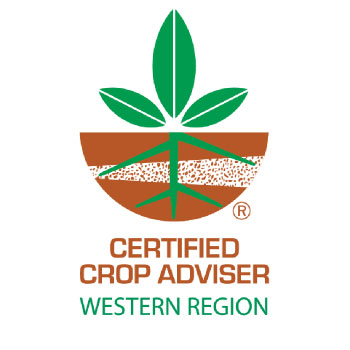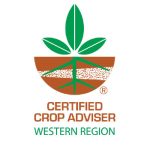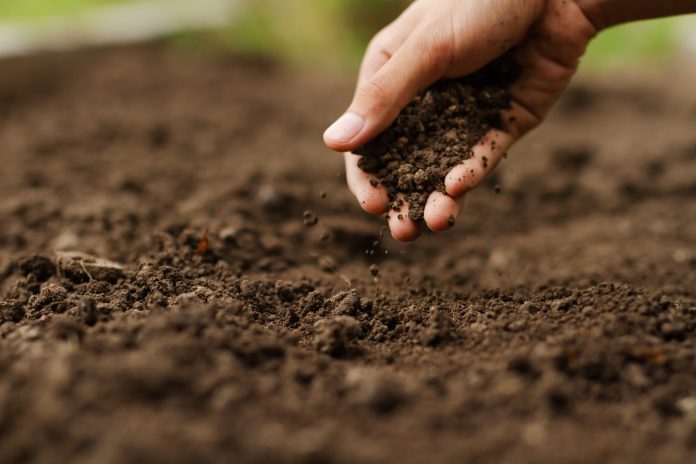
Management practices that improve soil health and soil quality have gained considerable attention over the past few years, and especially during the past year, as drought conditions have impacted large areas of North America. In this article, I focus on how the living, biological components of the soil (e.g., bacteria and fungi) can be key microbial partners in your future drought management strategy.
I detail how soil microbes impact soil physical properties, including the structure (e.g., aggregation and pore space) and the ability of the soil to move and store water. Additionally, I explain how soil microbes can help crops get through drought conditions using the substances they secrete. Finally, I close with a call to action to measure your soil biology so you can make management decisions now before the next season gets underway. If needed, a CCA can help you interpret data and make an actionable plan that can help tackle the continued drought conditions that are expected for the near future.

Let us begin with a quick reminder of what soil health means to a grower and how it is connected to the living component underground and drought management. Soil health is directly related to the interaction, or lack thereof, between organisms and their environment in a soil ecosystem and the properties provided by such interactions. When you think of soil health, think of the biological integrity of your field (e.g., microbial population and diversity) and how the soil biology supports plant growth. There is a direct link between soil health and how a soil can be managed to meet the challenges of drought conditions.
Soil Microbes and Drought Management
Soil microbes impact your ability to manage drought via two major pathways, i.e., the “Two Concepts of Drought Management” (Figure 1).
Concept 1: Soil Microbes Help Increase Water Penetration and Infiltration
Soil microbes help restore soil structure which helps water move from the soil surface downwards. This is known as water penetration. Once the water has penetrated the soil, it moves down into the soil for storage. This is known as water infiltration. If you are not capturing and moving water into the soil, you will have a tough time storing water in your field. Simply put, healthy soils have good structure, which excel at receiving and storing moisture. But how exactly do microbes improve water penetration and infiltration?
Abundant and diverse soil microbial communities produce “free” services for your farm soil, including the ability to receive and store moisture. The key to this ability lies in the ability of microbes to contribute directly to improving soil structure by binding soil particles together, which, in turn, helps water move from the soil surface and into the root zone.
Soil bacteria produce a sticky, glue-like gel called extracellular polymeric substances (EPS) that form a protective slime layer around bacteria as they grow. The EPS acts as an adhesive to bind soil particles, thereby improving overall soil structure. Fungi, another important group of soil microbes, produce miles of microscopic threads in the soil called hyphae. The threads capture and “tie” soil particles together, like a net, which improves overall soil structure. Fungi also produce a sticky protein-like substance called glomalin which, like EPS, helps bind your soil structure together via adhesion of particles.
Key Message: Soils with healthy microbial populations can restructure and re-aggregate the soil, which leads to better soil structure overall. Good soil structure allows for water (e.g., snowmelt, rainfall and irrigation water) to move from the soil surface (penetration) to below the soil surface for storage around and on the soil particles themselves (infiltration). This results in a number of benefits, including reduced runoff losses.
Research and grower experience corroborate this connection as reports show that soils with good structure often can store more water relative to degraded control fields nearby. Good soil structure also reduces runoff losses as water quickly moves downwards instead of horizontally across the soil surface, which carries materials off the field. Thus, soil microbes can be crucial partners for capturing and storing soil moisture, which will certainly come in handy during forecasted drought periods.
Concept 2: Robust Microbial Communities Release Substances to the Soil Which Can Help Crops Get Through Periods of Drought
This next concept is not so easy to visualize like changes in soil structure and the ability to store water. Imagine the microbial community on the right side of Figure 2 for the next few sentences and contrast the microbial abundance and diversity when compared to the “business-as-usual” farm soil on the left side. Now that you have refreshed your snapshot of the microbial community, we can turn our attention to the benefits that improved microbial abundance and diversity bring to a drought affected soil. Recent work has shown that soil microbes help crops get through periods of drought stress via the substances they release into the soil around the roots. These molecules include osmoprotectants and antioxidants, to name just a few (see first reference for a deeper dive).

Key Message: A hidden benefit of maintaining a thriving community of microbes during a drought are the substances they secrete. For example, osmoprotectants play a key role in managing challenges with plant water balance under drought conditions. In another example, antioxidants help mitigate oxidative stress and internal plant cell damage observed under drought stress. Studies show that when a robust microbial community releases certain substances belowground, a crop is better able to weather the stress of drought (e.g., low rainfall, higher temperatures) more successfully aboveground.
Managing Soil Biology
Now that we have examined how soil microbes can be crucial partners under drought conditions, we can now turn our attention to a crucial next step: managing the soil biology. I will walk through the basics on how to measure the biological activity of the soil and make the case to ask your trusted CCA for assistance if this management strategy is new to your operation or if you need help with interpretation of the results.
Tests are commonly used to measure chemical constituents of the soil (e.g., pH, nitrate, phosphate, etc.) or physical aspects of the soil (e.g., soil texture, cation exchange capacity). However, these tests do not determine how “alive” the soil is. You can accomplish this goal with a broad set of soil tests that target the living components of soil. Soil biology tests are diverse and include measurements of carbon dioxide respiration, extraction of DNA for microbial community analysis, and other key metrics (Table 1), depending on what parameter you are interested in measuring and your patience level to see a measurable change.

Testing the biological components of the soil is new to many growers and some have reported frustration about which test to choose, how to design a sampling program, and how to interpret and write an actionable plan based on the test results. This is where a Certified Crop Advisor can step in and help reduce the learning curve.
Final Thoughts
Soil microbes can help you mange drought in ways that are readily observable (e.g., changes in soil structure and water holding capacity) and in ways that are not (e.g., release of substances that help with drought stress). In any event, microbes are essential partners for dealing with drought conditions and their usefulness should be leveraged in any crop production program.
Dr. Karl Wyant currently serves as the Vice President of Ag Science at Heliae® Agriculture. To learn more about the future of soil health, you can follow his webinar and blog series at www.phycoterra.com.
Suggested Reading
Harnessing rhizosphere microbiomes for drought-resilient crop production – https://www.science.org/doi/10.1126/science.aaz5192
The Connection Between Your Soil Structure and Soil Moisture – https://phycoterra.com/connection-between-soil-structure-soil-moisture-crop/
Biological Management Practices to Maximize Soil Quality – https://progressivecrop.com/2021/05/managing-soil-structure-and-quality/
Comprehensive Assessment of Soil Health (The Cornell Framework) – https://soilhealth.cals.cornell.edu/training-manual/



















